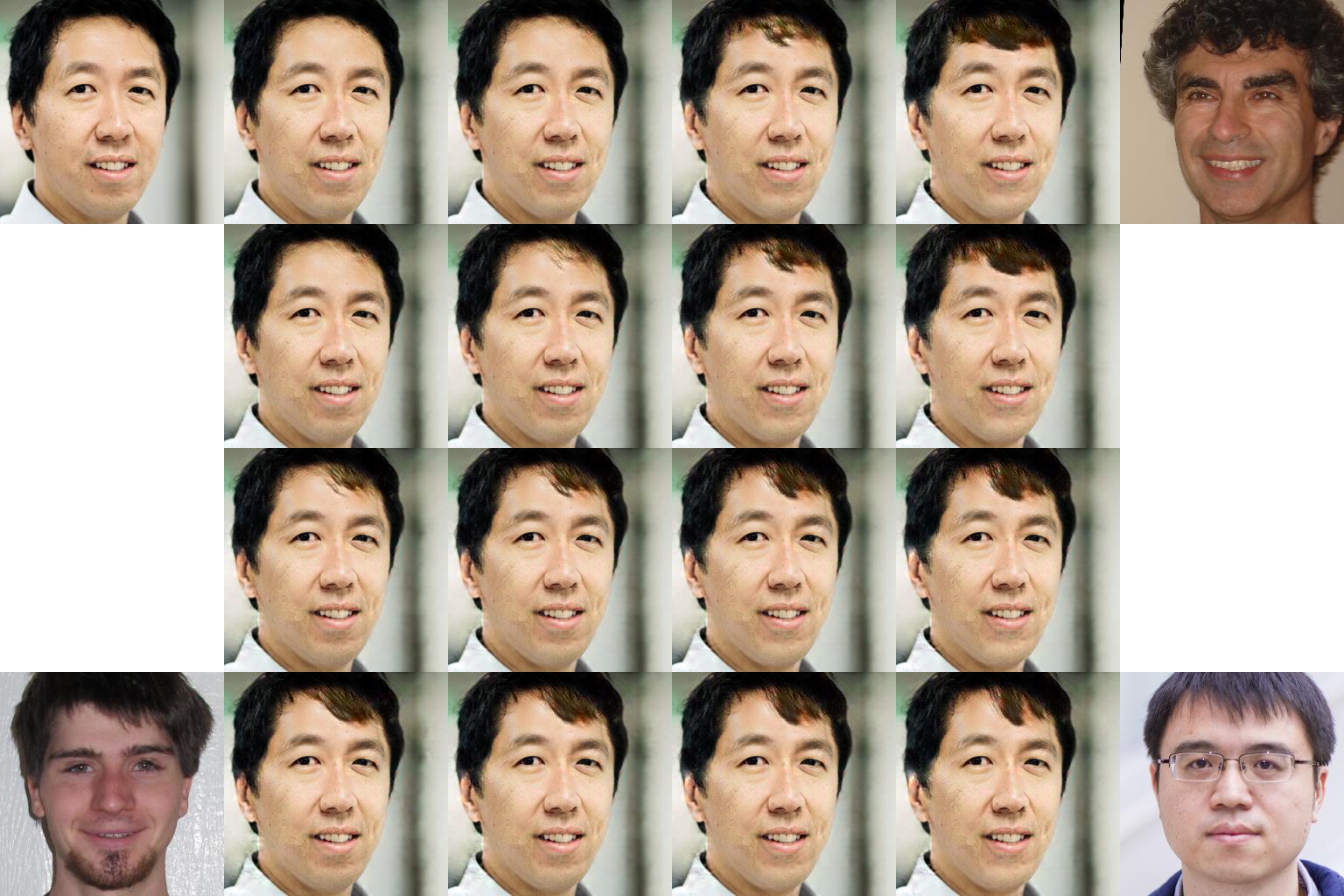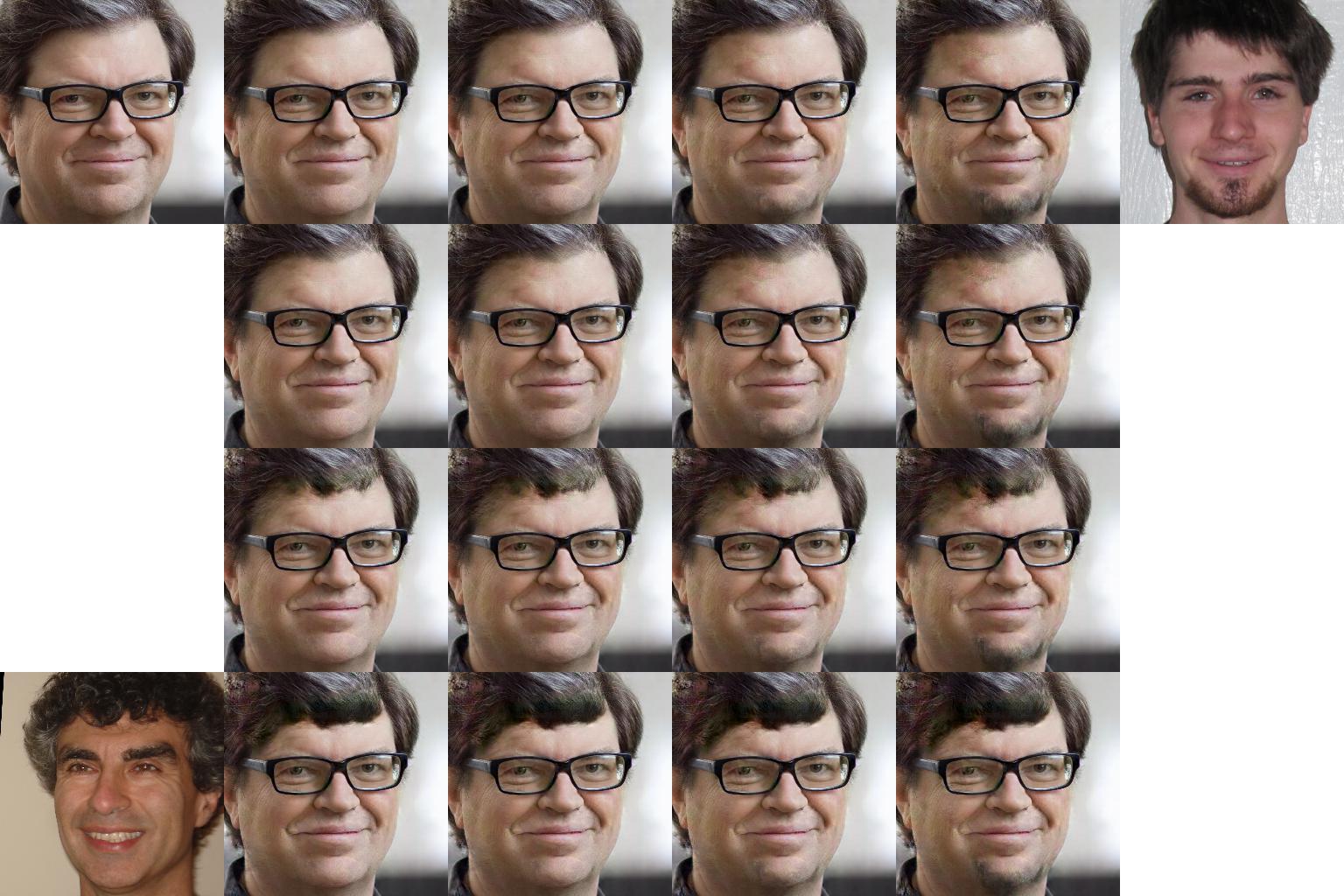Taihong Xiao, Jiapeng Hong and Jinwen Ma
Please cite our paper if you find it useful to your research.
@InProceedings{Xiao_2018_ECCV,
author = {Xiao, Taihong and Hong, Jiapeng and Ma, Jinwen},
title = {ELEGANT: Exchanging Latent Encodings with GAN for Transferring Multiple Face Attributes},
booktitle = {Proceedings of the European Conference on Computer Vision (ECCV)},
pages = {172--187},
month = {September},
year = {2018}
}
This repo is the pytorch implementation of our paper. ELEGANT is a novel model for transferring multiple face attributes by exchanging latent encodings. The model framework is shown below.
If you want to train or test the model on your own images, please do the facial landmark alignment first. We preprocess the whole datasete using 5p alignment here. However, you can use other alignment algorithm as long as it is consistent in both training and testing phases.
- Download celebA dataset and unzip it into
datasetsdirectory. There are various source providers for CelebA datasets. To ensure that the size of downloaded images is correct, please runidentify datasets/celebA/data/000001.jpg. The size should be 409 x 687 if you are using the same dataset. Besides, please ensure that you have the following directory tree structure in your repo.
├── datasets
│ └── celebA
│ ├── data
│ ├── images.list
│ ├── list_attr_celeba.txt
│ └── list_landmarks_celeba.txt
-
Run
python preprocess.py. It will take only few minutes to preprocess all images. A new directorydatasets/celebA/align_5pwill be created. -
Run
python ELEGANT.py -m train -a Bangs Mustache -g 0to train ELEGANT with respect to two attributesBangsandMustachesimultaneuously. You can play with other attributes as well. Please refer tolist_attr_celeba.txtfor all available attributes. If training ELEGANT with more than one gpu cards, you can accordingly increase the batch size, which is indicated in the first number ofnchwindataset.py. -
Run
tensorboard --logdir=./train_log/log --port=6006to watch your training process. You can use tags matching for inspecting one group of images. For example, if you type0_04in the image tags matching box, then a group of 10 images should be displayed together, including two original images, four residual images and four generated images. In the notation0_04,0indicates the first attribute and the04indicates the 4-th group.
We provide four types of mode for testing. Let me explain all the parameters for testing.
-a: All attributes' names.-r: Restore checkpoint.-g: The GPU id(s) for testing.- Don't add this parameter to your shell command if you don't want to use gpu for testing.
- No more than 1 GPU should be specified during test, because 1 image cannot be split into multiple GPUs.
--swap: Swap attribute of two images.--linear: Linear interpolation by adding or removing one certain attribute.--matrix: Matrix interpolation with respect to one or two attributes.--swap_list: The attribute id(s) for testing.- For example,
--swap_list 0indicates the first attribute. - Receives two integers only in the interpolation with respect to two attributes.
- In other cases, only one integer is required.
- For example,
--input: Input images path that you want to transfer.--target: Target image(s) path for reference.- Only one target image is needed in the
--swapand--linearmode. - Three target images are needed in the
--matrixmode with respect to one attribute. - Two target images are required in the
--matrixmode with respect to two attributes.
- Only one target image is needed in the
-s: The output size for interpolation.- One integer is needed in the
--linearmode. - Two integers are required for the
--matrixmode.
- One integer is needed in the
We can swap the Mustache attribute of two images. Here --swap_list 1 indicates the second
attribute should be swapped and -r 34000 means restoring trained model of step 34000.
You can choose the best model by inspecting the quality of generated images in tensorboard or
in the directory train_log/img/.
python ELEGANT.py -m test -a Bangs Mustache -r 34000 --swap --swap_list 1 --input ./images/goodfellow_aligned.png --target ./images/bengio_aligned.png
We can see the linear interpolation results of adding mustache to Bengio by running the following.
-s 4 indicates the number of intermediate images.
python ELEGANT.py -m test -a Bangs Mustache -r 34000 --linear --swap_list 1 --input ./images/bengio_aligned.png --target ./images/goodfellow_aligned.png -s 4
We can also add different kinds of bangs to a single person. Here, --swap_list 0 indicates we are
dealing with the first attribute, and there are three target images provided for reference.
python ELEGANT.py -m test -a Bangs Mustache -r 34000 --matrix --swap_list 0 --input ./images/ng_aligned.png --target ./images/bengio_aligned.png ./images/goodfellow_aligned.png ./images/jian_sun_aligned.png -s 4 4
We can transfer two attributes simultaneously by running the following command.
python ELEGANT.py -m test -a Bangs Mustache -r 34000 --matrix --swap_list 0 1 --input ./images/lecun_aligned.png --target ./images/bengio_aligned.png ./images/goodfellow_aligned.png -s 4 4
The original image gradually owns the first attribute Bangs in the vertical direction and the second attribute Mustache in the horizontal direction.




